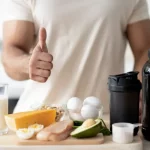
Image Source: Pexels
If you are into vaping, you might be craving some new flavors to try out with your favorite Box Mod. Vaping refers to the act of inhaling or exhaling aerosol (vapor) usually produced by an e-cigarette, vape pen or any such like device. You will realize that placing an order for a huge batch of vape juice flavors can be a bit pricy especially if your taste is aligned to the high-end side where a bottle goes for more than 20 USD. The good thing is that you can actually learn how to make some really nice homemade vape juice. This can turn out to be a fascinating and fun hobby not to mention the amount of money you will get to save.
Vaping is indeed a very personal experience and you can extend it to inventing your own e-liquids that suit your individual and fine-tuned taste. Visit the website on the link for more details. When you hear a Do it Yourself Vape Juice Process, you will most likely picture an insane scientist in some fusty laboratory playing around with explosions and laughing hysterically at all the different outcomes. The reality is quite the opposite; you will be surprised at how easy and normal the process is and you do not have to be a scientist to emerge successful at this! Let us have a look at most of the aspects involved in the process if not all of them:
- What you need for the process
- Ingredients found in the E-liquid
- The process of making your own E-liquid
- What to avoid using
- Steeping the vape juice
- Pros and cons of concocting your own E-liquid
- Safety precautions
Having stated the above points, let us delve deeper into exactly what each one of them entails.
What you need for the process
When you are ready to get ‘cooking’, you will need the following items; bases or diluents i.e. VG and PG, flavors, Nicotine, safety goggles, rubber gloves, lab gown, measuring cup for accuracy in the amounts of each ingredient used, syringes or pipets, empty bottles preferably sterile, a sizable funnel and an E-liquid calculator. The calculator comes in very handy if you do not want to do a lot of math. You can just search online for one that is compatible with your smartphone or personal computer.
Ingredients found in the E-liquid
Before you proceed to make your own E-liquid, it is paramount that you understand the ingredients used and the specific role of each one of them. There are four major components, but this does not limit you to adding any more.
- Nicotine
This is the most obvious ingredient. It stimulates that cigarette smoking effect. We all know that nicotine is hazardous; as such, you need to dilute it first before use. It is available in different strengths and it would be advisable to keep yours on a safe level. Additionally, you do not have to add it if you do not want to.
- Vegetable Glycerin (VG)
This is a base that you can use to dilute the nicotine. It also plays another important role; more like magic! It is the ingredient responsible for forming the vapor or cloud of the E-liquid. However, be careful on the amounts you use as VG can alter the flavor. Generally, the more the VG, the smoother the ‘throat hit’ and cloud thickness.
- Propylene Glycol (PG)
This is another base for nicotine dilution. Good thing, it is considered safe by the FDA. You will also find it in foods, pharmaceutical products, tobacco and also personal care products. It does not alter the E-liquid flavor and it gives you that smooth ‘throat hit’.
- Flavors
These basically give your concoction that particular taste you are craving. They vary in between fruit variations, baked goods, mints and anything else in between that spectrum. Playing around with flavors is what gives your ‘stuff’ that personal touch and you can go as crazy as you want to. It is advisable to mix them up one drop at a time.
The process of making your own E-liquid
Having put together everything you need, here is a sequential guide on how to get your juice going:
- Choose your nicotine strength or not if you do not want to
- Using a syringe or pipette, draw out the nicotine and transfer it into the bottle
- Add the dilutants using a different syringe
- Add your preferred flavors- this is where you get experimental so you can knock yourself out at this point
- Measure the nicotine content in your E-liquid. The E-liquid calculator will help you a huge deal on this
- Shake the bottle after you’ve put the cap on
- Note down everything; the measurements used etc. and label the bottle
In order to get more details of the process, visit the website on this link
What to avoid using
In as much as you want to get experimental, please avoid using some substances as they pose an immense danger to your health. Such are; Diacetyl, Acetyl Propionyl, Acetion just to mention a few.
Steeping the vape juice
It is almost similar to aging wine. For a complexly flavored mixture, most flavors are usually subdued. Vaping it will make them more pronounced. This is absolutely up to you and your preference for the flavors.
Pros and cons of concocting your own E-liquid
Pros
It is pure fun; you get a certain thrill when you mix up your own concoction and get creative while at it. Another benefit is that the process is quite cost-effective
Cons
The downside to this is the fact that it can be quite time-consuming. Additionally, if not carefully done the procedure can be quite perilous.
Safety precautions
- Gear up properly with eye goggles, an apron as well as the rubber gloves especially around nicotine
- Ensure that your equipment is clean, sterile and also leakage-free
- ‘cook it up’ in a distraction-free and clean environment
- Keep all the paraphernalia out of children’s reach
- In case of spills, clean them up immediately
- Dispose of all used gloves and syringes properly
Concluding Thoughts
When it comes to A Do it Yourself Vape Juice Process, there is so much that is involved. It is important that you get as much information as you possibly can before you indulge. In the above guide, we have purposed to give you as much information and in a manner that is super simplified to make it less daunting for you.
About The Author:
Stacey Smith is a freelance health writer. She is passionate to write about women’s health, dental health, diabetes, endocrinology and nutrition and provide in-depth features on the latest in health news for medical clinics and health magazines.




